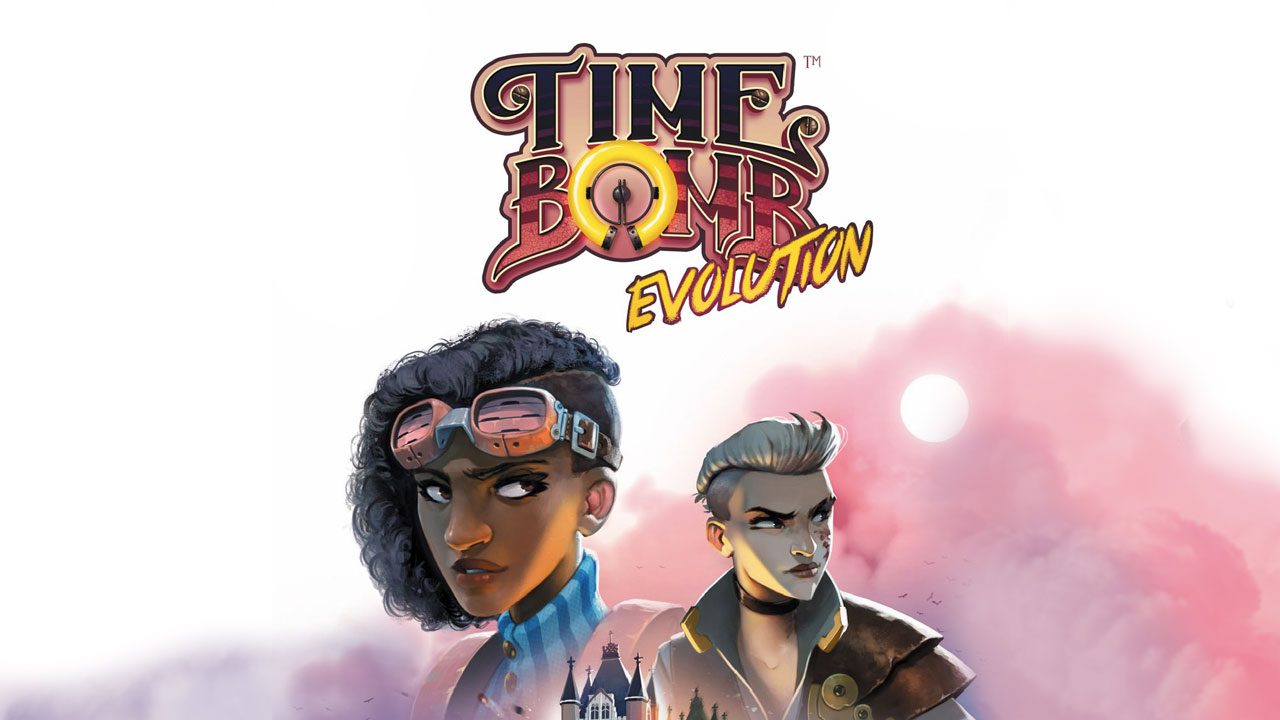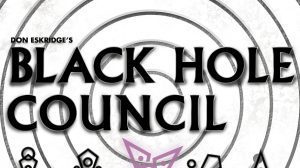Bombs. Social deduction. This is one of the few times where theme and mechanisms tie together quite well, a rarity in this painted cardboard industry. The concept is something anyone can understand: There’s a deck of cards, one of them is a bomb, a few are successes, and the rest are blank. You are part of a team of bomb defusers and if you’re good, you want to find all the success cards to win. If you are on the bad team, you want to either find the single bomb card or stall the game until the end of the 4th round. Pretty straightforward, right?
I just described Time Bomb. Time Bomb Evolution is the sequel to the original game, but to give some context and allow me to make comparisons, I will need to explain the first game. I’m already halfway there, so bear with me.
Where It Begins
After giving your deck a good shuffle, you are going to deal the cards to everyone on the table. Everyone will have the same number of cards, with the first-round being 5, the second round is 4, and so forth. The players will then look at their cards, say whatever they like (or not), and then shuffle their hand and put them in a row face down in front of them so they don’t know the order.
At the start of the game, someone will have the wirecutter and they will begin the game. The active player will use their wirecutter to pick another player besides themselves, pick one of their cards. This is the point where people can discuss whatever they like while the wirecutter is making their decision. After the decision is final, the card is flipped face-up. If the bomb card is revealed, the bad team wins immediately. A blank card does nothing, while a success card is just one step towards victory for the good team. Once the number of success cards equal to the number of players has been revealed, the good team wins.
Whoever had their card flipped by the wirecutter is now the active player and does the same thing. Repeat this until the number of cards revealed is equal to the number of players and the round ends. Gather all the remaining face-down cards, shuffle, and deal again to start a new round.
That’s it. It’s a simple social deduction with no player elimination, moderation, scripts, or eyes closing nonsense. Sounds brilliant, so why did this receive such little fanfare?
Where It Ends
Fatal design decisions. That one bomb card? You can pick that accidentally on the very first turn and the game ends immediately. No deduction involved here, just plain luck.
The blank cards are also detrimental to the game’s flow. Since they do nothing, it is common for two people on the same team to “boomerang” the wirecutter to each other, thus forcing the rest of the table not to participate in the game. Fun.
The last issue with the game is the lack of variables to lie about. You can only lie about the success cards or that single bomb card in your hand. Not very flexible and all you are doing is just hiding information instead of subverting it.
This is where Time Bomb Evolution comes in. It fixes all of the problems with the original game and it begins to show its real intentions. The flow of the game is the same as the shuffling, cards in a row, and wirecutter. The difference lies within the deck.
There are no blank cards or a single bomb card. That has been replaced by the copies of the six colored bombs. The twist here is you need four of the same color for the bomb to detonate and at the beginning of the game, some of these are randomly discarded so you cannot card count.

What this does is create an environment where danger is in every corner. You either flip a success card or a colored bomb. There is no middle ground in this situation meaning the boomerang tactic I’ve mentioned earlier no longer applies here. This also means there are far more variables to lie about. Besides lying about the number of success cards or bomb cards in your hand, you can also lie about the colors.
To put it briefly, this fixes everything wrong with the original game. However, I can’t judge a game based on how it compares to the original. I have to judge on its own compared to other short-form social deductions and unfortunately, this doesn’t cut it.
This is far too light on mechanisms and most of the decision making is quite obvious with very little variety. The arc will always be the same even though the colors might change. If I were to end this review, I would say this is a cute diversion with a very limited shelf life.
The scrollbar on the right side is telling you there is more to this story. What I just described was the “normal” version of Time Bomb Evolution. In the box, you’ll find a separate rulebook for the “Evolution” ruleset and this is where the fuse is lit.
Lighting It Up
In this variation, all cards have their own effect when flipped. When a success card has been revealed, there are two outcomes that can happen. If a bomb is already revealed and doesn’t have a success card on it, you put it on a colored bomb. As long that success card is on a colored bomb, that color will never detonate even if four of them are found. The downside to this is if you find a successful card and no bomb to put it on, you are still one step towards victory but you lose the effect.
What this does is create a very interesting scenario. Reveal too many success cards early and all future bombs that will eventually show up suddenly become a major problem since you can’t disarm them. On the flipside, revealing little to no success cards means that all those bombs will be disabled making the only option for the bad guys to win is to finish the 4th round. It creates this tense situation for both teams to lie to each other to have a middle ground.

The bombs themselves also have various effects. Green bombs only need 3 instead of 4 cards to explode. Blue bombs remove a success card on another bomb, enabling it to explode again. Red bombs force the next wirecutter to pick another player at random to reveal their card, with the randomizer being a separate deck of cards. Orange cards decrease the limit of each round, meaning in a 5 player game and 1 orange card, the round ends when 4 cards are revealed instead of 5. Pink cards do nothing on their own but will explode if 2 pinks are revealed in a row and this does override the success cards. Yellow cards cannot have any success cards on them.
With these changes, this game finally has a social and mechanical layer to it. The original Time Bomb only had the social ingredient which wasn’t enough to carry the game. Now players need to worry about the order of these effects triggering that requires maneuvering around the social maze and giving the much-needed replay value that is desperately needed. It also gives the players the tactical decisions of a light card game without distractions.
Which circles us back to the original question: How does this compare to other short-form social games?
This is not my favorite as that title belongs to Werewords but I cannot deny how well this game works. Unlike Werewords or the One Night series, Time Bomb Evolution doesn’t rely on technology or gimmicks to play the game and it is far more intuitive for new players.
The only fair comparison would be to other technologically deficient short-form social games such as Crossfire, Ravnica Inquisition, and Secrets. I prefer this game over all of the ones mentioned since it offers a more interesting puzzle for the players to solve together without weird rules getting in the way. Just a fair warning that this is a light game so don’t expect something as deep or interesting as Resistance Avalon and Werewolf. It is a game that will wear out its welcome if you play it consecutively since there aren’t many mechanisms to contend with. If that doesn’t bother you, this could be one worth looking into.
You can purchase this game at Amazon US













Add Comment